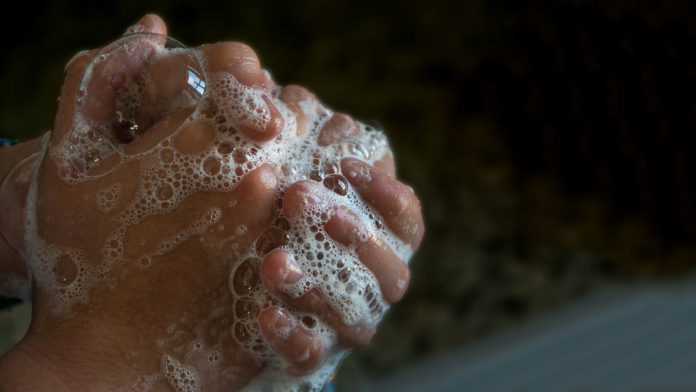The statistic is startling: even after using the washroom, less than 5 percent of us are washing our hands properly. This is a major problem for both personal and public health.
Dirty hands are one of the most common ways that diseases spread. Touching contaminated surfaces transfers viruses, bacteria, and parasites to our hands. From there, we inevitably spread them around our environment and onto our devices, and potentially to other people. We can also make ourselves sick when we eat or touch our faces.
To reduce the risk, proper hand hygiene is essential. And according to the recommended handwashing protocol from the World Health Organization, if you’re washing your hands in less than the amount of time it would take you to sing Happy Birthday twice, then you’re not washing them thoroughly enough.
Nicholas Ashbolt, professor of public health at the University of Alberta, believes more needs to be done to educate people on hand hygiene, starting with proper technique being taught in schools.
Beyond education, Ashbolt also advocates for better public washroom design and upkeep to encourage people to wash their hands properly when they’re out and about, and more likely to spread germs to more people.
“One big reason we don’t spend enough time washing our hands is because public washrooms often look dirty,” Ashbolt said in a statement. “They are not appealing.”
This worry over picking up more germs than are being washed off deters people from washing their hands properly. When researchers from the University of Michigan observed users in public washrooms, they found that people were more likely to wash their hands with soap when the sinks were clean.
While automatic faucets and soap dispensers help users touch fewer potentially contaminated surfaces, Ashbolt also says that the water doesn’t stay on for long enough, and users take this as a cue for how long they should be washing their hands. Water conservation is important, but needs to be balanced against the importance of proper handwashing.
And because poor hand hygiene is so widespread, Ashbolt also favours single-use paper towels over air dryers, as they can double as a barrier between users and contaminated surfaces like taps and doorknobs.
To date, most studies on handwashing compliance focus on healthcare and hospital environments. This work should also be extended to other locations known for rapid disease spreading, like university campuses, says Ashbolt.
Having clean hands is one of the most effective ways to reduce disease transmission. At first, 45 seconds of handwashing may feel like it will never end, but in the bigger picture, it takes less than a minute to do. And it could be one of the most important everyday activities for your health.




































